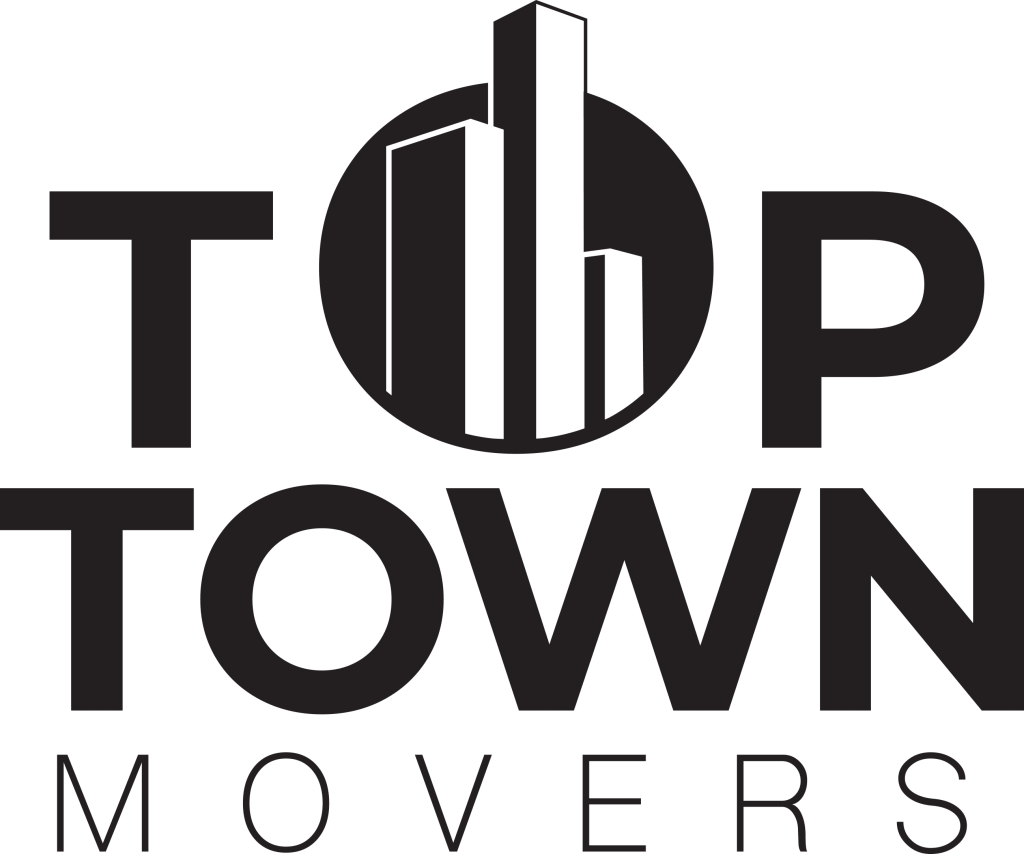A long-distance move is one of life’s most significant transitions. It’s a journey filled with the promise of a new beginning, new opportunities, and new adventures. But let’s be honest: it can also be one of the most daunting logistical challenges you’ll ever face. The sheer volume of tasks, from sorting through years of belongings to coordinating cross-province transport, can feel completely overwhelming.
Success in a long-distance move doesn’t happen by accident. It’s the result of careful planning, meticulous organization, and a clear, actionable strategy. Without a roadmap, it’s easy to get lost in the chaos, leading to stress, unexpected costs, and a rocky start in your new home.
At Top Town Movers, we’ve guided countless individuals and families from North York and across Ontario through successful long-distance relocations. We understand that a move is more than just transporting boxes; it’s about moving your life. That’s why we’ve created this definitive, step-by-step checklist. Think of this as your master plan—a timeline of essential long distance moving tips designed to take you from the initial planning stages to comfortably settling into your new home with confidence and peace of mind.
- Learn More >>>>Long Distance Moving
Phase 1: The Foundation (8 Weeks Before Moving Day)
The work you do two months out will set the tone for your entire move. This phase is all about planning, purging, and making the most critical decision: choosing your moving partner.
Step 1: Create a Master Moving Binder (Digital or Physical)
Organization is your greatest ally. Designate a single place to keep everything related to your move. This binder or folder should contain:
- A calendar with key dates and deadlines.
- Contact information for movers, real estate agents, and other services.
- Printed copies of quotes, contracts, and receipts.
- A section for your home inventory list.
- Notes, to-do lists, and reminders. This simple tool will prevent frantic searches for important documents and keep you on track.

Step 2: The Great Purge – Declutter and Downsize
One of the most effective long distance moving tips is also one of the simplest: the less you have to move, the easier and more affordable your move will be. The cost of a long-distance move is heavily influenced by the weight and volume of your shipment. Use the “Three-Box Method” for every room, closet, and drawer:
- Keep: Items that are essential, valuable, or hold deep sentimental meaning.
- Donate/Sell: Items in good condition that you no longer need. Consider online marketplaces, consignment shops, or local charities.
- Toss/Recycle: Anything that is broken, expired, or no longer usable.
Be ruthless. That piece of furniture that never quite fit in your old living room probably won’t fit in your new one either. A fresh start in a new home is the perfect opportunity for a fresh start with your belongings.
Step 3: Research and Book a Reputable Mover
This is the most important decision you will make. For a long-distance move, a professional, experienced moving company is non-negotiable. They handle the complex logistics, provide proper insurance, and have the right equipment to protect your belongings over hundreds or thousands of kilometres.
What to look for in a moving company:
- Proper Licensing and Insurance: Ensure the company has adequate liability coverage and WSIB coverage for its workers.
- Transparent Pricing: Request a detailed, in-home or virtual estimate. A reputable company like Top Town Movers will provide a clear, written quote with no hidden fees. Be wary of quotes that seem too good to be true.
- Positive Reviews: Look for consistently positive feedback on platforms like Google and HomeStars. Pay attention to comments about communication, professionalism, and care for belongings.
- Full Range of Services: A company that offers a suite of services can be a lifesaver. At this stage, consider if you’ll need a Packing Service to save time and ensure items are packed securely, or a Storage Service if there’s a gap between your move-out and move-in dates.
For residents in North York and the Greater Toronto Area, choosing a local expert like Top Town Movers means you’re partnering with a team that understands the specifics of moving within and out of Ontario.
- Learn More >>>>Long Distance Moving Toronto
Step 4: Establish a Realistic Moving Budget
Your moving company fee is just one piece of the puzzle. Create a comprehensive budget that includes:
- Professional mover costs.
- Packing supplies.
- Travel expenses (flights, fuel, hotels, meals).
- Utility connection fees and deposits at your new home.
- Temporary storage fees, if needed.
- A contingency fund (10-15% of the total) for unexpected expenses.
Phase 2: Gaining Momentum (4-6 Weeks Before Moving Day)
With your foundation set, it’s time to start the tangible process of preparing for the move.
Step 5: Gather High-Quality Packing Supplies
Don’t skimp on supplies. Weak boxes or cheap tape can lead to damaged goods. You will need:
- A variety of box sizes (small for heavy items like books, large for light items like linens).
- Specialty boxes (for dishes, wardrobes, mirrors).
- High-quality packing tape and dispensers.
- Permanent markers for labelling.
- Packing paper and bubble wrap for fragile items.
- Furniture pads or blankets (your movers should provide these, but confirm).

Step 6: Begin Packing Non-Essential Items
Start with the items you use least. Packing in stages makes the process far less overwhelming. Good starting points include:
- Out-of-season clothing and shoes.
- Books, photo albums, and decorative items.
- Guest room linens and contents.
- Fine china and special occasion items.
Pro Packing Tip: Label each box clearly with its destination room (e.g., “Kitchen,” “Master Bedroom”) and a brief description of its contents (“Pots and Pans,” “David’s Sweaters”). This will make unpacking exponentially easier.
Step 7: Create a Detailed Home Inventory
As you pack, create an inventory list of your belongings, especially high-value items. You can use a simple spreadsheet or a dedicated app. Note the item, its condition, and which box it’s in. Taking photos or a video of electronics and valuable furniture is also a smart move for insurance purposes. A professional mover will create their own inventory list (bill of lading), but having your own is excellent for cross-referencing.
Step 8: Notify Key Institutions and Request Records
Start the administrative process by notifying schools, doctors, and other professional services of your move. Be sure to request official copies of all important records for every member of your family:
- School transcripts and records.
- Medical and dental records.
- Veterinary records for your pets.
- Learn More >>>>500+ Things Gone | How To Declutter Like You Are Moving
Phase 3: The Final Details (2-3 Weeks Before Moving Day)
The countdown is on. This period is for finalizing logistics and tackling the crucial administrative tasks.
Step 9: Arrange for Utilities and Home Services
Contact your current and future utility providers to schedule service changes.
- Disconnect: Schedule disconnection of hydro, gas, internet, and cable for the day after you move out.
- Connect: Schedule connection of services at your new home for the day before you arrive. There’s nothing worse than arriving after a long journey to a home with no power or water.
Step 10: Complete Your Change of Address
Don’t rely on mail forwarding alone. Directly notify important parties of your new address:
- Canada Post (official mail forwarding service).
- Banks, credit card companies, and investment firms.
- Insurance providers (home, auto, life).
- Government agencies (Canada Revenue Agency, Service Ontario for driver’s license and health card).
- Subscription services and online shopping accounts.
Step 11: Finalize Your Personal Travel Plans
Whether you’re flying or driving, lock in your travel arrangements. If you’re driving a long distance, plan your route, book pet-friendly hotels in advance, and prepare your vehicle for the journey with a full service check-up.

- Learn More >>>>The BEST House Moving Tips (and Mistakes to Avoid)!
Phase 4: The Final Week (1 Week Before Moving Day)
It’s the home stretch. Focus on final preparations and packing your most crucial items.
Step 12: Pack Your “Essentials” or “First Night” Box
This is one of the most critical long distance moving tips. This box travels with you in your car, not on the moving truck. It should contain everything you’ll need for the first 24-48 hours in your new home before the main shipment arrives or is fully unpacked.
- Medications and a first-aid kit.
- Toiletries (soap, toothbrushes, toilet paper).
- A change of clothes and pajamas for everyone.
- Important documents (passports, moving contract, new lease/deed).
- Phone and laptop chargers.
- Basic tools (box cutter, screwdriver, hammer).
- Snacks, water bottles, and pet food.
Step 13: Confirm Final Details with Your Movers
Call your moving consultant at Top Town Movers a few days before the move to re-confirm:
- The exact move date and arrival time.
- Both old and new addresses.
- Your mobile number and the driver’s contact information.
- Any special instructions or last-minute questions.
Step 14: Finish Packing and Prepare Your Home
Focus on the last-minute items from the kitchen and bathrooms. Defrost and clean your refrigerator and freezer at least 24 hours before moving day. Consolidate anything you are not moving into one room or closet. If you’ve accumulated a final pile of junk, a company offering additional moving services like debris removal can be a huge help. For older adults, our Senior Moving service specializes in handling these final, often stressful, details with extra care and patience.
Phase 5: Moving Day and Beyond
- Learn More >>>>Tips to Make Moving Less Stressful
Step 15: Execute a Smooth Moving Day
Your primary job on moving day is to be a supervisor.
- Be present when the crew arrives.
- Protect your floors with coverings.
- Clearly label any items or rooms that are not part of the move.
- Do a final walkthrough of every room, closet, and cupboard before the truck leaves to ensure nothing is left behind.
- Review the bill of lading (the official inventory and contract) carefully before signing.
Step 16: Master the Arrival and Unpacking Process
When the truck arrives at your new home, be ready to direct the crew.
- Have a floor plan handy to show them where to place large furniture items.
- Check items off your personal inventory as they come off the truck, noting any damage.
- Prioritize unpacking: start with the “Essentials Box,” then set up beds and assemble the basics in the kitchen and one bathroom. You don’t have to unpack everything at once.
Conclusion: Your Partner for a Successful Move
A long-distance move is a marathon, not a sprint. By breaking it down into a manageable, step-by-step checklist, you can transform an overwhelming task into a well-orchestrated success. This plan, combined with the right professional partner, is your ticket to a stress-free relocation.
At Top Town Movers, we offer more than just muscle and a truck; we provide peace of mind. From our meticulous Packing Service to our compassionate Senior Moving assistance, we are dedicated to supporting you at every step. For more personalized long distance moving service or to get a transparent, no-obligation quote for your upcoming move in Ontario, contact us today. Let’s start this exciting new chapter of your life on the right foot, together.

































